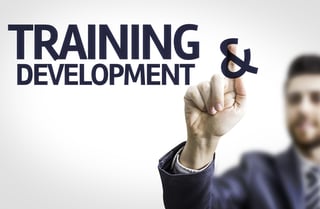So you’re a corporate trainer - or maybe you’re not - but you have been tasked with the learning and development of your organization. Whether you are in a small business setting or at the enterprise level, there is a lot riding on your position to be able to effectively disseminate information for the masses and ensure its appeal. This is no small order, but we think if you keep these five principles in mind when working through your learning and development program - you are off to a great start in terms of ensuring your programs success.

Boredom kills.
If you can’t remember anything else from the rest of the article - remember this! Do you remember the last time you were required to sort through information, regardless if it will help you become successful in your job? If it is boring, it is that much harder to pay attention to, let alone remember and put into action. There is a scientific reason for this: all information coming in the brain is filtered through the amygdala. The amygdala is responsible for emotion, survival instinct, and, you guessed it, memory! When a learner becomes bored, the amygdala becomes hyperactive and it sends all of the information it received to the lower 80 percent of the brain, to what scientists refer to as the “involuntary brain,” here information is as good as gone in terms of memory. Boredom essentially means that important learning content isn’t remembered. At the very least, prioritize the content from most important to least important and work to ensure that the most important content is also the most engaging.
Repetition is key.
I’ll say it one more time, repetition is key. If you haven’t gone to the gym recently, you prepare to feel sore after your first workout - and any time you work out a different set of muscles, again, you’ll feel sore. Just like the muscles in our bodies, neural pathways in the brain are weakened over time. When you were younger and consistently learning algebra, those principles became easier to recall. However, since we no longer are in school consistently learning how to apply the lessons we learn, our brains tend to forget the very things we are taught and supposed to remember. In other words, if learners are not using knowledge or skills gained through training they will begin to forget it. So I will say it again, repetition is key! Not to mention, the more ways you engage a learner through various types of learning - the more likely their brain will remember this information.
Information overload.
John Sweller, an educational psychologist, first coined the term “cognitive overload” in 1998. Honestly, we all have a limited amount of working memory at our disposal to process and understand information and this can fluctuate depending on many different outside forces. This means when a learner is presented with information, it is important that it is delivered in smaller chunks which he or she can reasonably process. So don’t require watching a 45-minute video and a 10-chapter book unless also given the proper amount of time. This principle also applies to cramming. While some people have a larger recall ability, for most, to store information in our long-term memory it works best by revisiting information frequently, in smaller doses, than working through a long study session. Creating a corporate culture of working on education material to improve job satisfaction and success levels for 15-20 minutes a day can improve the longevity of that information being stored as well as put into practice on the job.
Give learners the “Why”.
If a learner can’t make the connection between learning content and application in their everyday life, they won’t have a reason to use what you are trying to teach them and therefore the motivation to understand the topic presented to them. Even if the reason may seem obvious to you as you create content, individuals tend to inflate their abilities - so if learners believe they already know the information, they are likely to tune it out. The “why” could be as simple as: on the job success will earn you more money, or our clients have been complaining so you need to take this seriously. Figuring out what motivates your employees can go a long way to motivating them for continuing education, and “because I said so,” even coming from an authority figure isn’t likely to go far with adults. As the person guiding learning and development, it is your role to communicate expectations and the motive behind learning a particular piece of knowledge or skill.
Setting expectations.
In a chapter book, the author outlines the chapters and page numbers - not only for easy navigation, but to understand what the reader has to look forward to once they begin. Chapter titles can give hints of events and provide contextual clues about what you are about to read, similarly the first time learners interact with teaching, it creates a strong impression upon them for how the rest of the training is going to go. It’s important to present information in a logical and clear manner at the start of any training module and to inform the learners about what is to be expected and how the information is divided for their benefit. The foundation of learning that you set in place becomes the map students use to navigate all further information and can set the tone for all future interaction with the material.
Working through these principles as you prepare your learning and development courses for your business will save you a lot of headache in the future. While these won’t solve all problems that you will come up against as you work through course development, keeping these in mind will set up your training for the highest chance of success and positive feedback from those that interact with the material. There are always ways to improve your training program, this is just the start, but using these principles as a guideline will help set the tone for future training and give a great foundation that employees can rely on when it comes time to taking a new course or refreshing old knowledge.



